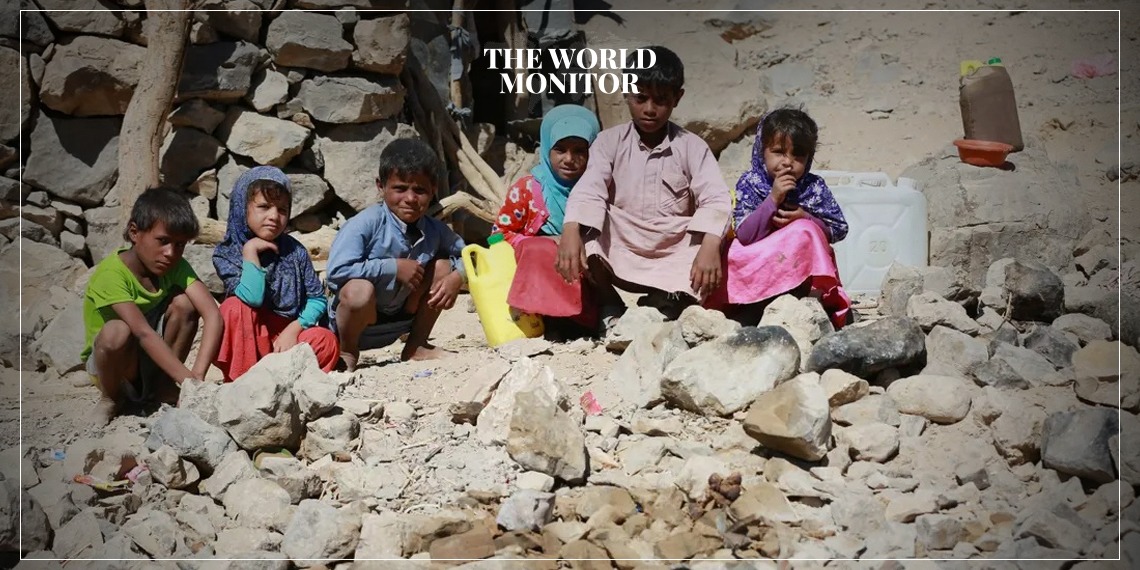In the midst of record-breaking global temperatures and dire warnings of an impending “global boiling,” a resounding alarm echoes about the profound impact of heatwaves in the Middle East. This region, already grappling with socio-political turmoil, is now at the crossroads of climate-induced crises.
Imene Trabelsi, the Near and Middle East spokesperson for the International Committee of the Red Cross (ICRC), spoke with Al Arabiya English, shedding light on the confluence of relentless summer heat and ongoing conflicts. Trabelsi emphasized that the countries most vulnerable to climate change, 14 out of 25, are also those entangled in conflict. The ramifications of climate change, especially the intensification of heatwaves, compound the existing humanitarian challenges posed by conflicts, while also eroding infrastructure and access to vital services.
July’s unprecedented heatwave officially marked the hottest month ever documented, with global temperatures soaring to unprecedented heights.
Iran, a nation perched on the precipice of climate vulnerability, is acutely feeling the brunt of escalating heat. With over 85 million inhabitants, the country contends with the dual burden of climate change and soaring temperatures. In response to scorching temperatures exceeding 40 degrees Celsius in many cities and nearly 50°C in some regions, the government declared a two-day holiday for government workers and banks.
Similarly, Egypt, grappling with intensifying heatwaves, implemented scheduled power cuts to alleviate the mounting pressure on its electricity grid and natural gas reserves.
Trabelsi underscores the ICRC’s observations of extraordinary temperatures in cities like Yemen’s Aden and Iraq’s Basra, along with the outbreak of forest fires in Syria. These extreme weather events compound the vulnerability of already-strained communities, further straddling them between the turmoil of conflicts and the merciless grip of heatwaves.
The most marginalized communities find it even harder to cope with these extreme weather conditions, especially those marred by past or ongoing conflicts. Trabelsi emphasized that rising temperatures lead to exacerbated unmet fundamental needs for millions in these afflicted regions.
Where Conflict and Heatwaves Collide
A stark portrayal of the crisis emerges within the Syrian refugee camps, where the intersection of conflict and scorching heatwaves paints a distressing picture.
Jamale Abu Hamad, an ICRC worker, recounts her visit to a Syrian Refugee Camp in Lebanon’s Arsaal region. She vividly describes the plight of refugees enduring temperatures surpassing 40 degrees Celsius. Amid these dire conditions, inhabitants must make agonizing choices, prioritizing meager water supplies that fall woefully short of the recommended daily emergency quota of 30 liters per person.
“Refugee settlements are particularly vulnerable during summer,” she observes, reflecting on her recent visit. “We arrived at one of the refugee camps in Arsaal around 2 pm, and the temperatures had already exceeded 40 degrees Celsius.”
Abu Hamad’s account paints a picture of nearly deserted camp alleys, deemed too scorching to step out into. The water distribution point stands in stark contrast, where children, men, and women gather, vying to collect the remaining drops of water from bottles and jerrycans.
Among the crowd, Mohammed, a camp resident, echoes the struggle. He affirms that during the summer months, he requires at least 15 liters of water daily solely for drinking, a daily necessity for his family. Abu Hamad solemnly adds, “This is the most unbearable summer since our arrival at this camp in 2014. We have never experienced such relentless heat.”
As per a UNDP projection, by 2040, temperatures in Lebanon are anticipated to rise by approximately 1°C along the coast and 2°C in the mainland.
For these displaced families, surviving the sweltering heat entails a grim balancing act. Mothers are confronted with the heart-wrenching dilemma of allocating precious water for drinking, cooking, cleaning, or leaving their families acutely parched. Insufficient and contaminated water bring forth new health crises, a tragic reality underscored by the cholera outbreak in these camps earlier this year.
Abu Hamad reveals that ICRC workers engaged in conversations with mothers who disclosed the agonizing decision they must make before utilizing water to provide their children with a daily shower.
Worsening Conditions
The Middle East and North Africa region is grappling with mounting crises, as the number of refugees and internally displaced people continues to surge, exacerbated by the recent outbreak of the Sudan crisis. Current UN figures indicate a staggering 15.7 million refugees in the region, a number expected to rise further.
Internal displacement has also reached alarming levels, with countries like Syria witnessing 6.9 million internally displaced people, while Yemen struggles with 4.5 million. The convergence of heatwaves and these already vulnerable populations amplifies their struggle to access even the most basic necessities, compounded by socio-economic fragility and limited livelihood opportunities.
Imene Trabelsi, the regional spokesperson for the International Committee of the Red Cross (ICRC) in the Near and Middle East, underscores the importance of operational collaboration across the humanitarian-development-peacebuilding nexus. This collaboration aims to harness the synergies between these organizations’ mandates and expertise, particularly to aid the most vulnerable communities.
Investments in environmental and climate services, especially in remote and informal settlements, offer opportunities for anticipatory actions and improved responses. Empirical studies on successful and unsuccessful adaptation measures in conflict-affected regions are crucial for informed decision-making and effective programming.
Trabelsi emphasizes the pivotal role of local communities as agents of adaptation, which leads to better outcomes and reduces the risk of maladaptation. Those directly impacted by climate change, including displaced individuals, possess invaluable insights into identifying critical risks and contributing to innovative solutions.
“For all actors, including humanitarian organizations and donors, empowering decentralized decision-making and ensuring direct access to legitimate community-led structures should be a priority,” Trabelsi further asserts.
In addition to bolstering food and water systems, there is an urgent need to invest in health system resilience in conflict-affected nations. This will ensure a more effective response to the compounded effects of environmental degradation, climate challenges, and conflict on the lives and livelihoods of vulnerable populations.






